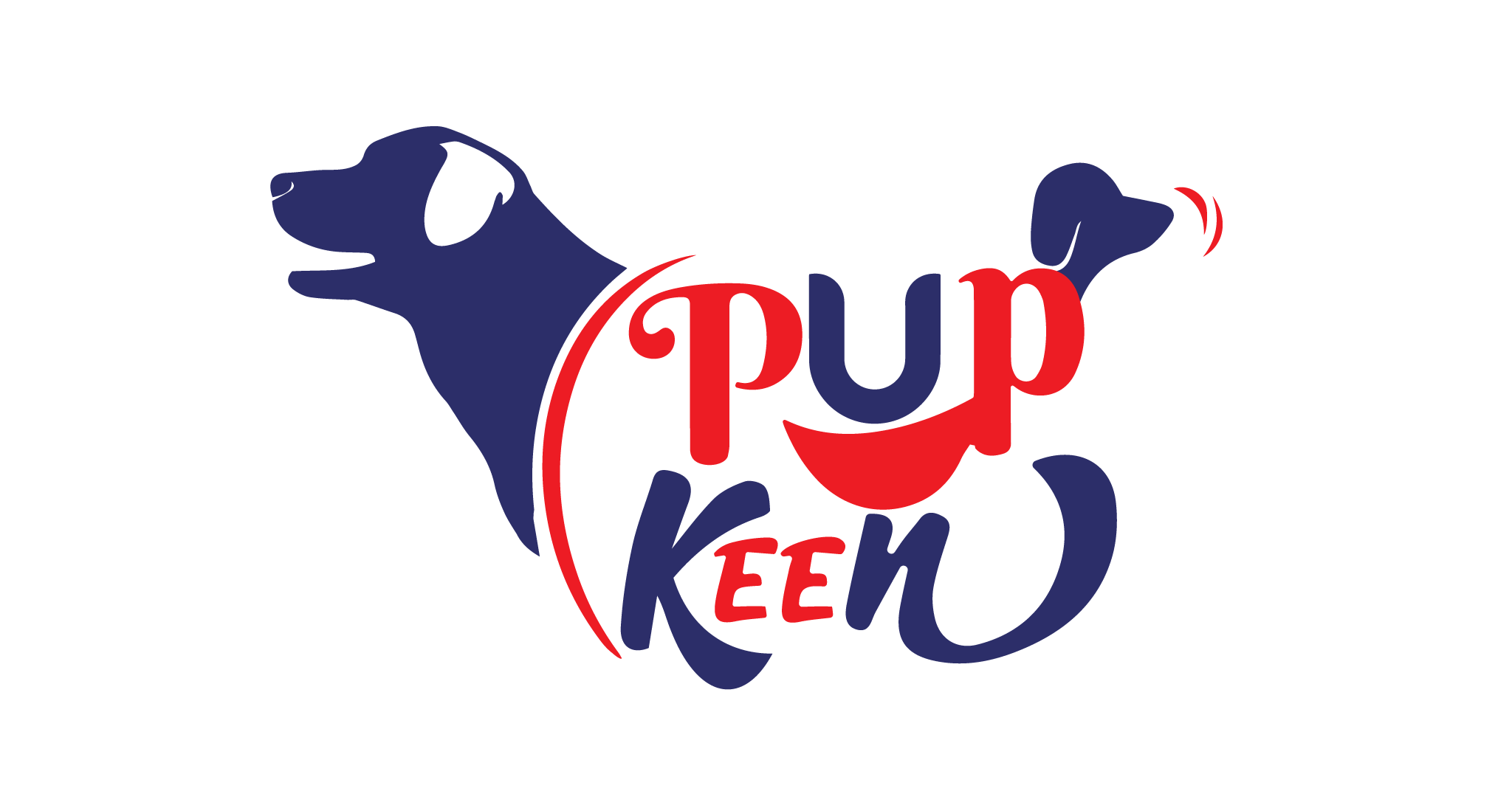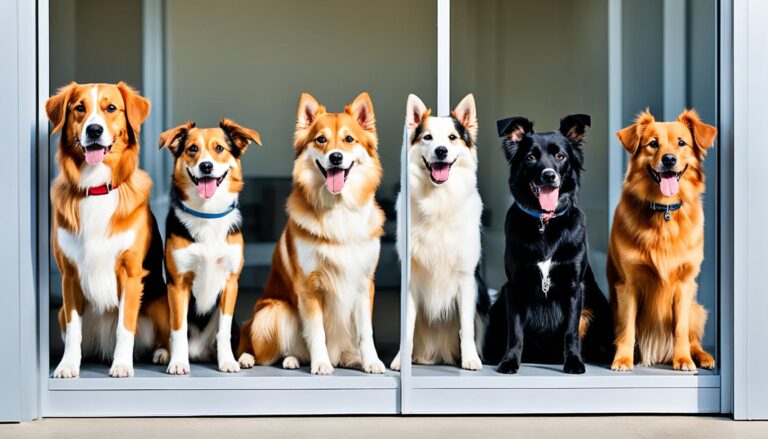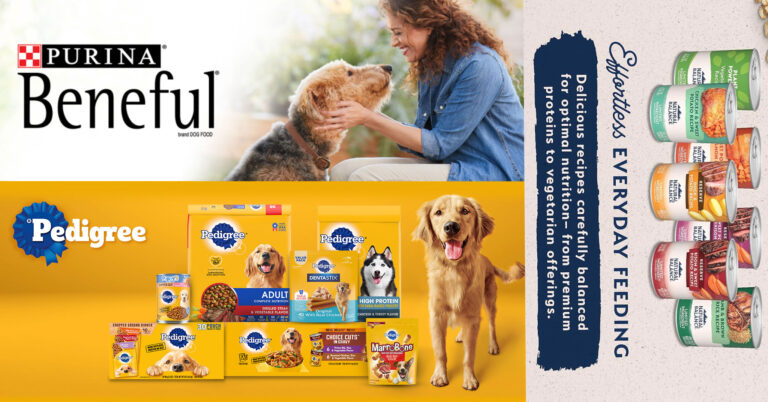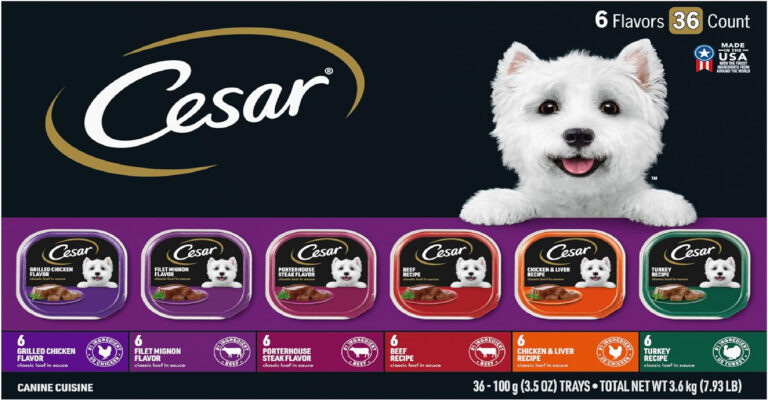Obesity in Dogs: Creating an Effective Weight Loss Diet Plan
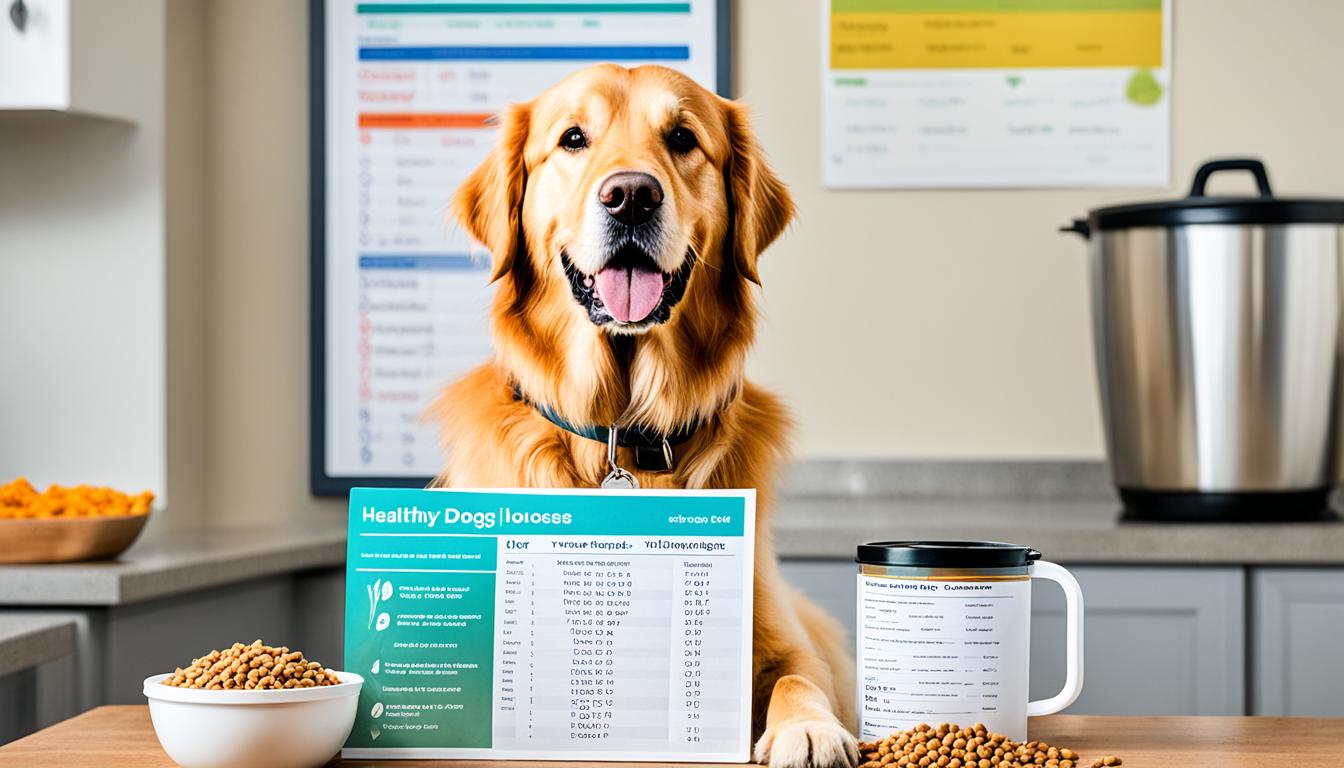
Did you know that up to 60% of dogs in the United States are overweight, with half of those considered obese? This shows a big health problem with our pets. As a pet owner, I’ve found that a dog weight loss diet can really help our furry friends live better and longer.
Being overweight in dogs is not just about looks. It can cause serious health issues, like joint disease and metabolic disorders. What’s worse is that these dogs live about 1.8 years less than those at a healthy weight. That’s why managing dog obesity is key for every owner.
The good news is, we can help our dogs lose weight with the right plan. A well-thought-out diet and regular exercise can make a big difference. Dogs at a healthy weight live longer and are more energetic, which makes them happier with their families.
As we look into making weight loss plans for our dogs, we’ll check out healthy recipes and vet-approved diets. We’ll also share tips for success. Remember, every dog is different, so we need to adjust our plans for their needs.
Key Takeaways
- Up to 60% of dogs are overweight, with half considered obese
- Overweight dogs live an average of 1.8 years less than lean dogs
- A proper diet is the most crucial factor in dog weight loss
- Veterinary weight-loss diets are specially formulated for optimal results
- Regular exercise, like daily 30-minute walks, is vital for weight management
- Treats should account for no more than 10% of a dog’s daily calorie intake
- Most dogs achieve their ideal weight within six to eight months
Understanding Canine Obesity: A Growing Concern
Canine obesity management is now a key issue in pet health. In my veterinary practice, I’ve seen a sharp rise in overweight dogs. This issue affects dogs of all breeds and sizes.
Prevalence of obesity in dogs
Canine obesity means a dog weighs 20% or more over its normal weight. This problem affects many dogs, hurting their health and quality of life.
Health risks associated with overweight dogs
Being overweight can lead to serious health issues in dogs. These include arthritis, heart disease, diabetes, and cancer. It’s sad to see dogs have trouble breathing and moving easily. Their daily lives are greatly affected.
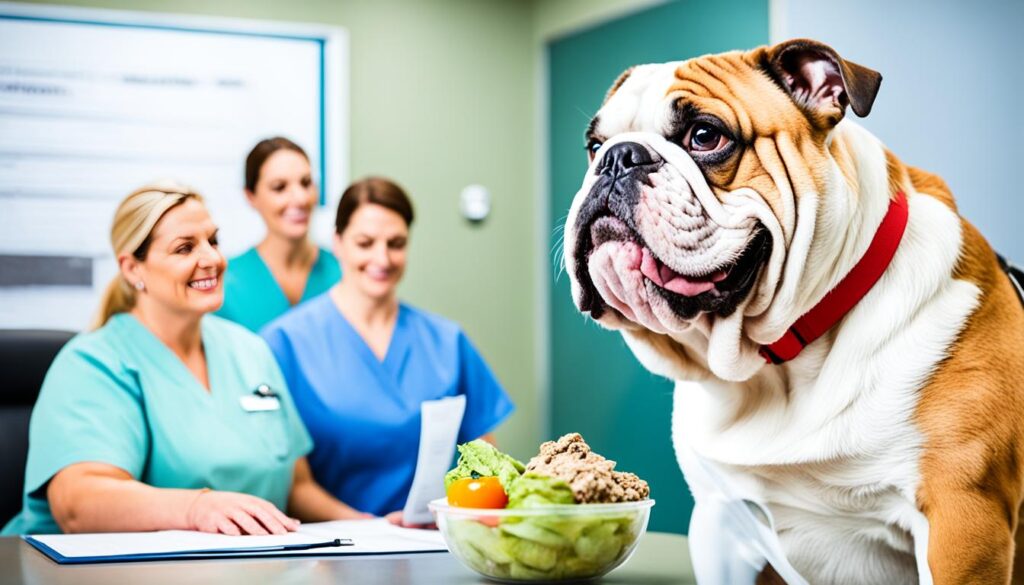
Impact on quality of life and lifespan
Overweight dogs don’t live as long as those at a healthy weight. Keeping a dog at an ideal weight can add up to two years to their life. This shows how crucial it is to tackle canine obesity.
| Condition | Impact on Lifespan | Associated Health Risks |
|---|---|---|
| Healthy Weight | Normal lifespan | Lower risk of obesity-related diseases |
| Overweight | Up to 2.5 years shorter | Increased risk of arthritis, diabetes, heart disease |
| Obese | Up to 2.5 years shorter | High risk of all obesity-related diseases, reduced quality of life |
Identifying Obesity in Your Dog
It’s important to know if your dog is overweight. I’ll show you how to check your dog’s weight using the body condition score chart and understand breed-specific obesity risks.
Body Condition Scoring System
The body condition scoring system is a great way to check your dog’s weight. It uses a 9-point scale. A score of 4-5 is perfect for most dogs. Scores of 6 mean your dog is overweight, and 7-9 mean they’re obese.
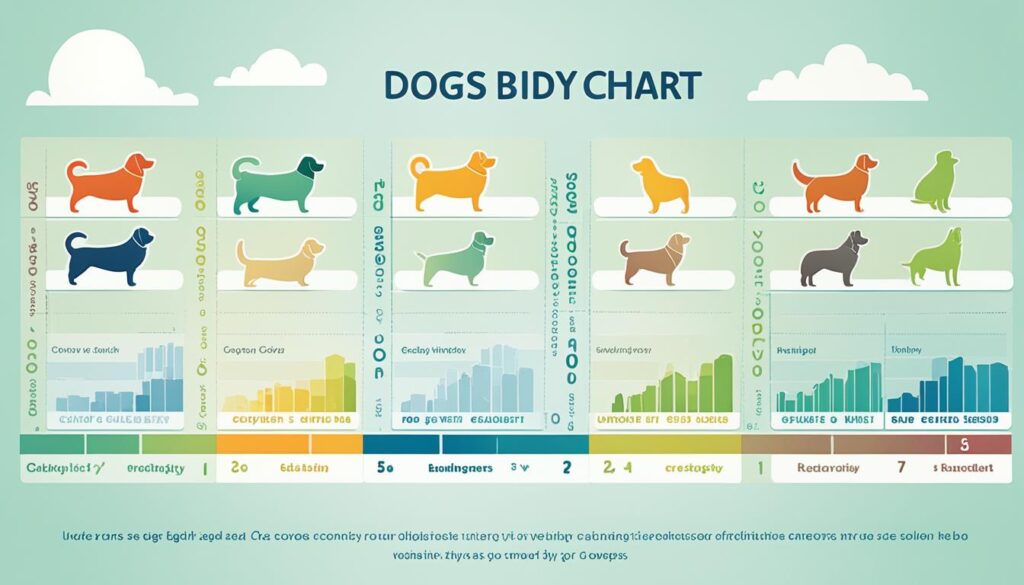
Visual and Physical Cues of Obesity
Here are signs to check your dog’s weight:
- Hourglass shape from above
- Visible waist
- Easily felt ribs
If you don’t see these signs, your dog might be too heavy. Sadly, 9 out of 10 owners think their overweight pets are at a healthy weight.
Breed-Specific Considerations
Some dogs are more likely to get fat because they have slower metabolisms. These include:
| High-Risk Breeds | Moderate-Risk Breeds |
|---|---|
| Labrador Retrievers | Corgis |
| Golden Retrievers | Newfoundlands |
| Pugs | Beagles |
| Cocker Spaniels | Mixed breeds |
Knowing these breed-specific risks helps you keep your dog at a healthy weight. Regular vet visits are key for checking your dog’s weight and getting the right care.
Causes of Dog Obesity
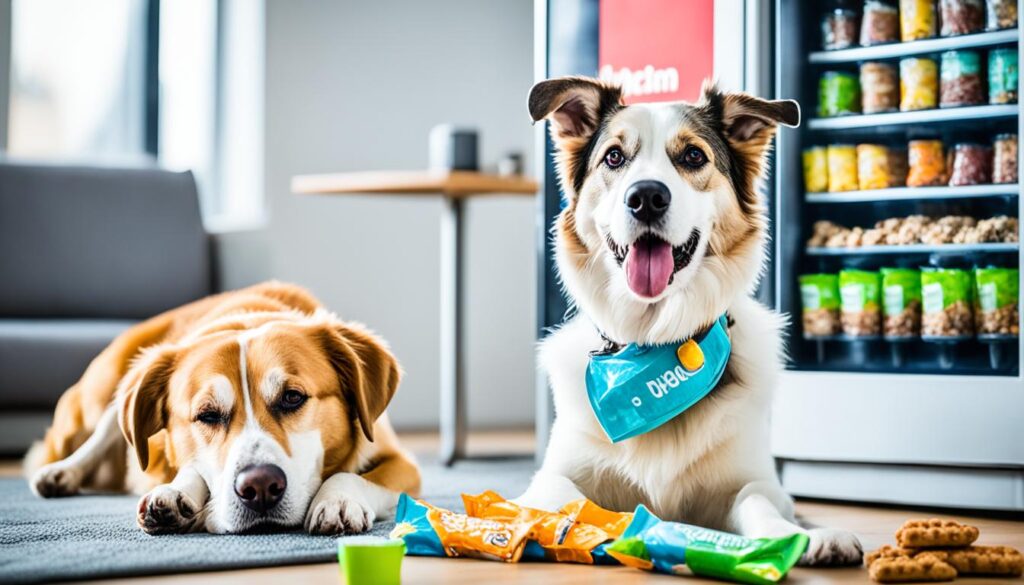
I’ve seen many dogs struggle with weight issues, and it’s crucial to understand the root causes. Dog weight gain factors are complex and varied. Overfeeding is a big problem. Even small extra portions can lead to significant weight gain over time. This often happens when family members feed the dog without coordinating.
Lack of exercise in dogs is another key factor. As dogs age, they tend to become less active. This can lead to weight gain if their diet isn’t adjusted. Some breeds are more prone to obesity, needing extra attention to their diet and exercise.
Medical conditions can also contribute to weight issues. Hormonal imbalances, like thyroid problems, can make it hard for dogs to maintain a healthy weight. It’s important to rule out these conditions with a vet check-up.
| Factor | Impact on Weight | Prevention Strategy |
|---|---|---|
| Overfeeding | High | Measure portions, coordinate feeding |
| Lack of Exercise | High | Regular walks, playtime |
| Breed Predisposition | Moderate | Breed-specific diet and exercise plans |
| Medical Conditions | Varies | Regular vet check-ups |
Understanding these dog weight gain factors is the first step in preventing obesity. By addressing overfeeding risks and ensuring adequate exercise, we can help our furry friends maintain a healthy weight. This way, they can live longer, happier lives.
The Importance of Veterinary Consultation
Getting expert advice is crucial for your dog’s health. Vet-approved weight loss plans are vital for your pet’s well-being. Always start with a detailed health check-up before starting any weight loss plan.
Ruling Out Underlying Medical Conditions
A vet check-up can find hidden health problems that cause weight gain. Issues like hypothyroidism or Cushing’s syndrome make losing weight hard. Your vet will do a physical exam and might suggest blood tests to understand your dog’s health fully.
Customizing a Weight Loss Plan
Every dog is different, so tailored diets are key for losing weight. Your vet will look at your dog’s breed, age, and how active they are to make a special plan. They use a body condition score (BCS) system, which ranges from 1-9, with 4-5 being perfect. Each point above the ideal means about a 10% increase in weight.
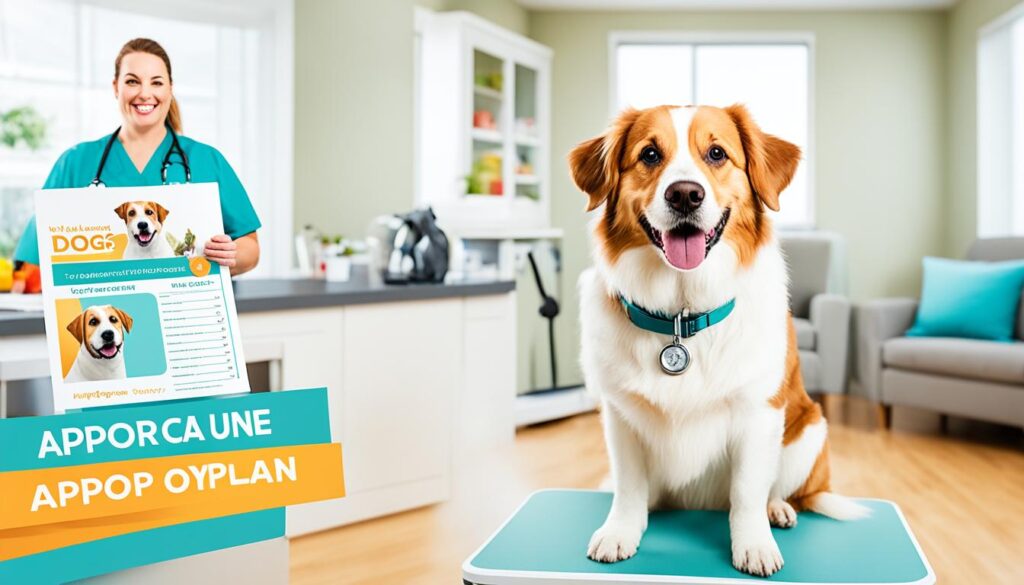
Regular Check-ups and Progress Monitoring
Keeping an eye on progress is crucial. I recommend weighing your dog every two weeks. Aim for a weight loss of 1-2% of body weight each week. Your vet will tweak the plan as needed, making sure your dog loses weight safely and stays well-nourished.
| Aspect | Recommendation |
|---|---|
| Weight Loss Target | 15% of current weight |
| Weekly Weight Loss | 1-2% of body weight |
| Calorie Content | 300 calories per cup |
| Treat Allowance | 10% of daily caloric intake |
Calculating Caloric Needs for Weight Loss
Finding the right calorie intake is key for your dog’s weight loss. A dog calorie calculator based on the RER formula for dogs is a good start. This formula helps us see how many calories your dog needs to lose weight safely.
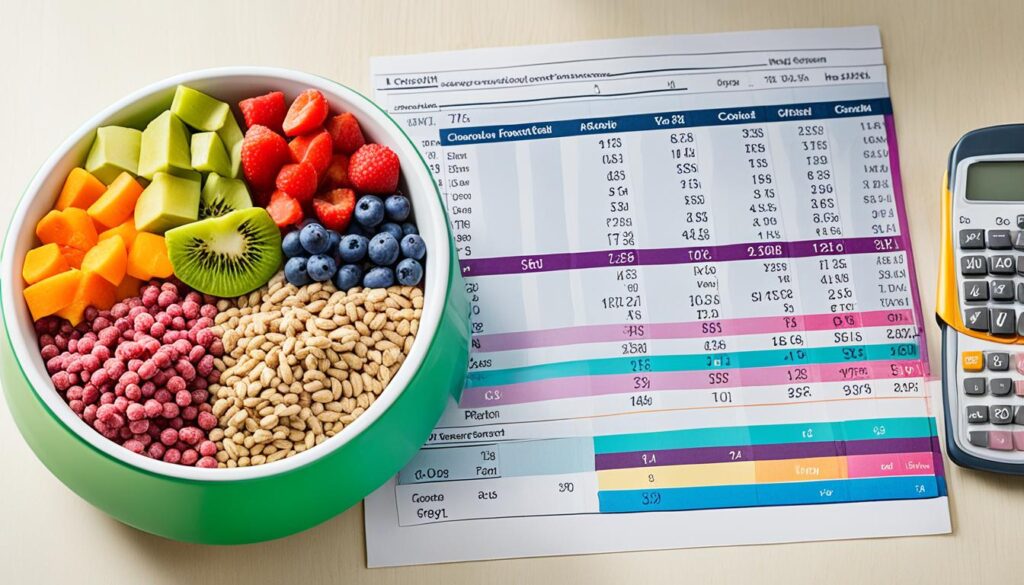
- Start with the Resting Energy Requirement (RER) formula: (weight in kg x 30) + 70
- Apply a factor based on your dog’s specific needs (usually 1.0 for weight loss)
- Consider factors like health status and whether they’re spayed/neutered
Spaying or neutering can cut energy needs by 20-30%. Always talk to your vet for precise calculations suited to your dog’s needs.
| Dog Weight | Daily Calories for Weight Loss |
|---|---|
| 10 lbs (4.5 kg) | 200-275 calories |
| 20 lbs (9 kg) | 325-400 calories |
| 50 lbs (22.7 kg) | 700-900 calories |
| 70 lbs (31.8 kg) | 900-1050 calories |
| 90 lbs (40.8 kg) | 1100-1350 calories |
Calorie control is key for weight loss, making up 90% of it. Exercise adds the last 10%. With these tips and your vet’s help, you’ll be on the right path to a healthier weight for your pup.
Choosing the Right Dog Weight Loss Diet
Helping your furry friend lose weight is important. The right diet is key. I’ve learned that effective weight loss foods for dogs have some common traits.
Characteristics of Effective Weight Loss Foods
Low-calorie dog food is vital for weight loss. These foods have fewer calories but more protein and fiber. They also have less fat but still have all the needed vitamins and minerals. This mix makes your dog feel full on fewer calories.
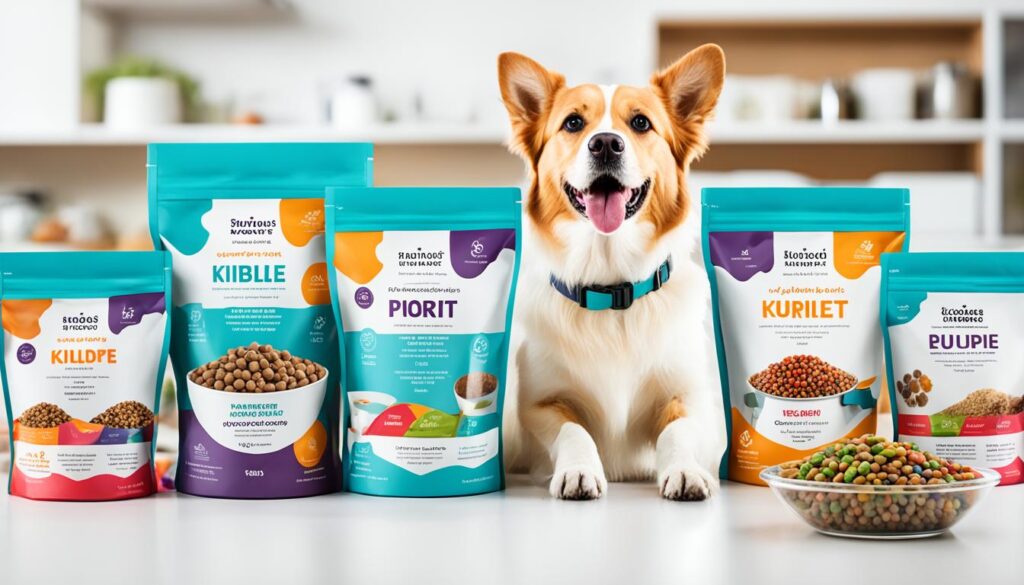
Comparing Commercial Diet Options
Commercial weight loss diets are easy to use and well-balanced. When picking one, I look for foods that boost metabolism. Here’s a look at some popular brands:
| Brand | Protein (%) | Fiber (%) | Fat (%) |
|---|---|---|---|
| Brand A | 30 | 10 | 9 |
| Brand B | 28 | 8 | 10 |
| Brand C | 32 | 12 | 8 |
Homemade Diet Considerations
Homemade dog food can be customized for your pet. But, it needs careful planning. Always talk to a vet nutritionist to get it right. Homemade diets can help with weight loss but must have the right nutrients for your dog’s health.
Slow weight loss is best. Aim for a 4-5% drop in weight each month. This keeps muscle and prevents too much hunger. With patience and the right diet, your dog can get healthier and might even live longer.
Portion Control and Feeding Strategies
Mastering dog food portion control is key to your furry friend’s weight loss journey. I’ve learned that precise measurements are crucial. Weighing food in grams beats using cups any day. It’s amazing how small differences can add up over time.
When it comes to meal frequency for dogs, I’ve found that scheduled meals work best. Free-choice feeding often leads to overeating. Some dogs do well with smaller, more frequent meals. This can boost their metabolism and keep them feeling satisfied.
Measuring dog food accurately is a game-changer. Don’t rely solely on package guidelines – they’re often off the mark. I always account for treats in my dog’s daily calorie intake. Limiting treats to 10-20% of total calories helps keep things in check. Low-calorie options like veggies or fruits are great alternatives to high-calorie treats.
| Feeding Strategy | Benefits | Implementation Tips |
|---|---|---|
| Precise Measurements | Accurate calorie control | Use a food scale for grams |
| Scheduled Meals | Prevents overeating | Set consistent feeding times |
| Smaller, Frequent Meals | Boosts metabolism | Divide daily portion into 3-4 meals |
| Treat Limitation | Reduces excess calories | Use low-calorie options like veggies |
Remember, effective weight management requires consistency and patience. By following these strategies, you’re setting your pup up for success in reaching their ideal weight.
The Role of Exercise in Canine Weight Loss
Exercise is crucial for helping our furry friends lose weight. Let’s look at some safe and effective dog exercise routines that can help your pup.
Safe Activities for Overweight Dogs
For overweight dogs, start with low-impact exercises. These include:
- Walking
- Swimming
- Hiking on gentle terrain
These exercises are gentle on the joints and boost heart health. For dogs with joint problems, swimming is a great choice.
Gradually Increasing Activity Levels
Increasing exercise levels slowly is key. Begin with 5-10 minute sessions twice a day. As your dog gets fitter, increase the workout time and intensity.
Combining Diet and Exercise for Optimal Results
Exercise and diet work best together. A study found dogs on diet and exercise lost up to 13.6% of their weight in six months.
| Exercise Type | Duration | Frequency | Benefits |
|---|---|---|---|
| Walking | 20-30 minutes | Twice daily | Low-impact, easy to start |
| Swimming | 15-20 minutes | 2-3 times weekly | Joint-friendly, full-body workout |
| Fetch | 10-15 minutes | Daily | Fun, adjustable intensity |
Always talk to your vet before starting any new exercise plan. With patience and consistency, you’ll see your pup’s health improve soon!
Treating and Tracking Progress
Watching my dog’s weight loss is crucial for success. I make sure to weigh him at the same time every day. This keeps things consistent. I aim for a slow weight loss of 1-2% of his body weight each week, as advised by experts.
To track my dog’s progress, I use different tools. A body condition score chart lets me see changes over time. I also measure and photograph him to track progress beyond just the scale.
It’s key to celebrate small wins. Seeing my dog have more energy and move better is just as important as the weight loss. If progress slows, I talk to my vet to change the plan.
- Use a consistent scale for weekly weigh-ins
- Track progress with body condition score charts
- Take measurements and photos for visual comparison
- Aim for 1-2% body weight loss per week
- Celebrate non-scale victories like increased energy
It’s important that everyone in the house knows about the weight loss plan. This helps avoid any setbacks. By following the plan and using these tools, I’ve seen big improvements in my dog’s health and happiness.
Managing Setbacks and Plateaus
Weight loss journeys for dogs can hit roadblocks. Many pups struggle to lose those extra pounds. Let’s look at ways to beat these challenges and keep our furry friends on track.
Adjusting the Diet Plan
When progress stalls, it’s time for diet changes. I suggest cutting daily calories by 25 to 40 percent. If weight loss doesn’t start in 4-6 weeks, tweak feeding practices and adjust calorie amounts.
Addressing Emotional Eating and Begging
Treats should make up no more than 10 percent of daily calories. Offer attention and affection instead of food. This helps stop emotional eating and begging, common issues in weight loss plateaus.
Staying Motivated
Motivational tips for dog owners are key to success. Regular weigh-ins every 2-4 weeks are a must. Aim for a 1-2 percent body weight loss each week. Remember, it might take a month to see results.
| Weight Loss Phase | Action | Frequency |
|---|---|---|
| Initial | Reduce calories | Daily |
| Plateau | Adjust diet plan | As needed |
| Ongoing | Weigh-in | Every 2-4 weeks |
| Maintenance | Increase food by 10% | After reaching target weight |
By using these strategies, we can help our dogs beat plateaus and reach their weight loss goals. Remember, patience and consistency are crucial in this journey.
Maintaining a Healthy Weight After Weight Loss
Many dog owners find it hard to keep their pets at a healthy weight after they’ve lost weight. Keeping your dog at a good weight is key for their long-term health. Once your dog reaches their ideal weight, it’s time to focus on preventing weight gain.
To keep your dog at a healthy weight, slowly increase their calories to a maintenance level. Watch their weight and body condition closely. Regular weigh-ins are important. The Association of American Feed Control Officials (AAFCO) has guidelines for pet foods that help with weight management. Look for labels that say “light” or “low-calorie” when picking out food.
Exercise is still very important for your dog’s weight. Change their activity level as they get older. Watch how many treats and table scraps you give them, as they can add up fast! The Honest Kitchen has great options like Whole Grain Chicken Clusters, with 428 kCal per cup, which is perfect for weight management. Regular vet check-ups will help keep your dog’s health in check.
